| River Battleships:
Those Incredible Pieces
By Mike Bennighof, Ph.D.
July 2023
 Panzer Grenadier: River Battleships is meant to be the coolest game thing ever: it’s both a Panzer Grenadier game, and a naval game. River monitors and smaller armored gunboats fight it out on Eastern Europe’s great rivers and coastal seas. Panzer Grenadier: River Battleships is meant to be the coolest game thing ever: it’s both a Panzer Grenadier game, and a naval game. River monitors and smaller armored gunboats fight it out on Eastern Europe’s great rivers and coastal seas.
And if that isn’t enough coolness, we have the toys. Die-cut, silky-smooth pieces cut with 21st-Century technology that slices through the material with blades so sharp they cannot be touched by human hands. So sharp that they need little pressure to make their cut, leaving the “back” side of the pieces so smooth that we have to mark them, since you can’t tell otherwise. No more mangled game pieces smashed with the force of a thousand stomping elephants. And coated to be, well, silky-smooth.
Since we have the technology to make the pieces is just about any size and shape we desire, we’ve done so. River Battleships has four different sizes: “long” pieces for the river monitors themselves, slightly less long pieces for river gunboats, square pieces for markers and standard Panzer Grenadier-sized pieces for, well, standard Panzer Grenadier pieces.
So let’s have a look at the pieces, with those lovely Tiffany Munro drawings:
Czechoslovakia
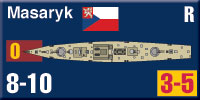
The river monitor Masaryk was on the small side, but we gave her a full-sized piece to show off the artwork. She didn’t see any action in 1938, surrendering to the Germans along with the rest of the Czech armed forces. That allowed the Germans to twist her to their own uses.
Hungary
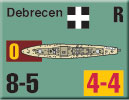 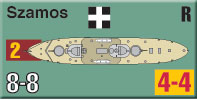 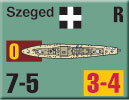
Hungary’s small Danube flotilla operated armored gunboats left over from the old Imperial and Royal Danube Flotilla. Hungary emerged from the Great War as a very poor nation, and could not afford the upkeep on all of its Danube warships, but we included a couple more of them anyway.
Yugoslavia
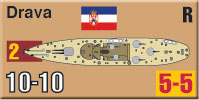 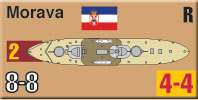
Yugoslavia inherited four of the Austro-Hungarian river fleet’s monitors, and gave them a few modifications over the next two decades. They fought the Hungarian flotilla in April 1941, but did less well when the Germans sent Stukas after them. Two of them survived to be taken over by the new Croatian puppet state.
Croatia
 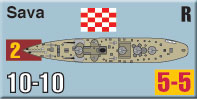
The so-called “Independent State” of Croatia salvaged two scuttled Yugoslav monitors and brought them into their own service. They actually saw a great deal of action against the partisans, but one was lost when she struck a mine and the other when her crew scuttled her and joined the partisans.
Poland
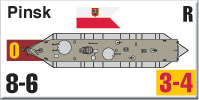 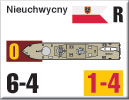 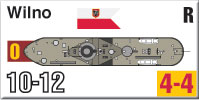
The Pinsk flotilla operated a half-dozen small river monitors, that didn’t manage to do much against the Soviet invaders thanks to low water in September 1939. Taken over by the Soviets, they were only slightly more effective in June 1941. A smaller flotilla on the Vistula fought the Germans in 1939, and its vessels, taken into German service, saw action during the German bombardment of Warsaw in 1944.
Germany
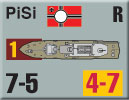 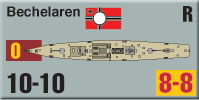 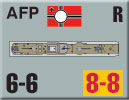
The Germans operated makeshift river flotillas, with so-called “artillery lighters,” essentially self-propelled river barges equipped with 88mm guns and 20mm flak pieces. They also seized the Czech monitor Masaryk as their own Bechelaren, and a Polish river gunboat as well. Late in the war they tried to copy the Soviet “river tanks” with their own version armed with surplus Panzer III turrets; the project did not end well.
Romania
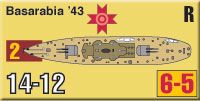 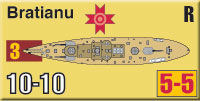
Romania built four large, well-armored monitors just before the First World War, and acquired three more former Austro-Hungarian vessels afterwards. That made for a powerful fleet on the Danube, and several of the monitors were modified for service on the Black Sea as well (including depth-charge throwers to allow them to operate as very slow anti-submarine escorts).
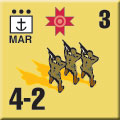 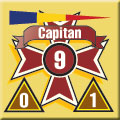
Romania also maintained a Marine Infantry Regiment, one company of which accompanied the monitors for landing operations while the remainder served on coastal defense duties at the outbreak of the war. The Romanian monitors skirmished with the Soviet Danube Flotilla in June and July 1941; the monitors did well but the Romanian Marines were routed by their Soviet counterparts.
Soviet Union
 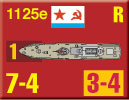 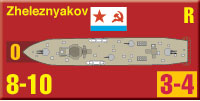
The Soviet Union poured far more resources into riverine warfare than anyone else, and so Red Navy colors (the Navy controlled river flotillas) dominate River Battleships, starting with their river monitors. Their initial designs didn’t work out so well – Imperial Russia built monitors for the Far East, but not in Europe, so there were no holdover river warships for the Danube, Dnepr and later Volga flotillas. Soviet designs were either too large, like the Udarnyi class equipped with 130mm naval cannon, or too weak, like the monitor Zheleznyakov (still preserved as a war memorial) and her sisters. And so the Red Navy seized Polish and later Romanian vessels and pressed them into their own flotillas.
 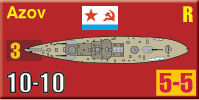 
The Soviets also built the world’s largest river warships, the mighty Khasan class. Initially intended for the Far East, where they would also patrol the waters around Sakhalin, they were built along the Volga, disassembled and put back together along the Amur River bordering Manchuria. But it seemed necessary to include at least one in the River Battleships set, since they could have been retained in Europe (Khasan herself completed for the first time in August 1940; it took almost two years to take her apart, move her along the Trans-Siberian Railway and put her back together). These are actual warships, with six 130mm naval guns in three twin turrets and displacing more than a destroyer.
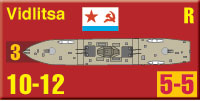  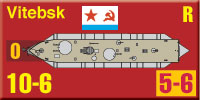
A smaller version, the Vidlitsa class with just two such turrets, was initially intended for the Far East as well but had been ordered diverted to the rivers of European Russia. Instead, they were blown up at Kiev in July 1941, still incomplete. But you can play with them anyway.
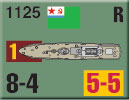 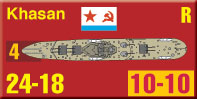 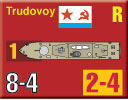
Far more successful were the “armored cutters,” or river tanks. Two main models saw action during the war, Type 1125 with one tank turret (initially from T28 tanks, later from T34/76 production) and Tyoe 1124 with two turrets. While they gave good service both on the rivers and in coastal waters, when the Red Army fell back over the course of 1941 and 1942 many of them were trapped and unable to retreat, forcing their crews to destroy them. A larger version armed with a pair of turrets from T34/85 tanks appeared late in the war, specifically intended for service in coastal waters as well as on rivers.
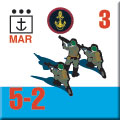 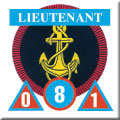 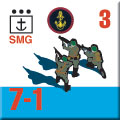
The Red Navy also gets ground troops for the first time in Panzer Grenadier. The Soviet Marines are very tough, well-armed and well-led. They see some action against the Romanian Marines in River Battleships; woe to the Romanians.
The Future
  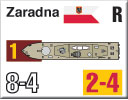
River Battleships is a stand-alone Panzer Grenadier game; you get two “wide river” mapboards plus the Naval Tactical Map so you can play the sixteen scenarios included. River monitors usually operated in conjunction with ground forces, and we’re looking at River Battleships as a source for maps and pieces for more scenarios yet to come. This is going to be fun.
You can order River Battleships right here.
River Marines
River Battleships
Black Sea Marines
Retail Price: $62.98
Package Price: $50
Gold Club Price: $40
You can order the River Marines right here.
Sign up for our newsletter right here. Your info will never be sold or transferred; we'll just use it to update you on new games and new offers.
Mike Bennighof is president of Avalanche Press and holds a doctorate in history from Emory University. A Fulbright Scholar and NASA Journalist in Space finalist, he has published a great many books, games and articles on historical subjects; people are saying that some of them are actually good.
He lives in Birmingham, Alabama with his wife, three children, and new puppy. He misses his lizard-hunting Iron Dog, Leopold.
Want to keep Daily Content free of third-party ads? You can send us some love (and cash) through this link right here.
|
